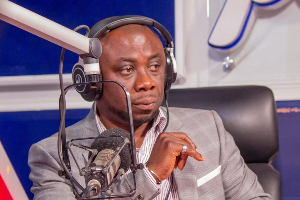NPP Flagbearer Nana Akufo Addo in his “true state of the nation address,” blamed the sharp decline in cocoa production on bad policies by the Mahama Administration. The twice defeated Presidential candidate said:
“Agriculture and industry, which should be the key drivers of the economy, are doing very badly. Last year, agriculture as a sector grew by only 0.04%. This was because crops generally recorded negative growth of -1.7% and cocoa declined in growth from 4.3% in 2014 to 3.0% in 2015. So much then for the claim by the President to have made cocoa farming attractive! Cocoa farmers will tell you that all the gains they made in the Kufuor years have been systematically eroded in the Mahama era. Industry suffered one of the most heartbreaking setbacks in Ghana’s history in 2015.”
Nana Addo adds that …… We are in a state of crisis when cocoa production has been going down because the government of Ghana changed the mass cocoa spraying regime they met, to an NDC cocoa farm spraying project. We are in a state of crisis when Ghana is reduced to importing.
But the declining trend in the cocoa production today is not a development that is peculiar to Ghana. Checks have revealed that it is a problem that is sweeping across the sub region and other major cocoa producing countries. Nigeria, Indonesia, Cote d’Ivoire and Cameroun have all not been spared of the decline.
The world’s largest producing country Ivory Coast has suffered a sharp drop. It lost about 250,000 tons from 1.25 million metric tonnes to about 1million in 2015. Indonesia lost an average of 300,000 tonnes. According to The Bloomberg Business, Indonesia is also recording a similar experience due a combination of factors. These include the EL NINO effect, a bad weather condition associated with low rainfall. In Ghana’s case, like other West African countries such as Nigeria, Cameroon and Ivory Coast the harsh harmmatan experienced last year coupled with overage cocoa trees depleting soil fertility have affected production.
Nana Akufo Addo obviously in an attempt to be mischievous failed to as usual acknowledge these global developments which are well known. Rather, he chose to trivialize government interventions so far. These include the free distribution of about sixty million hybrid seedlings, the fertilizer subsidy program, the mass spraying exercise and the phenomenal increase in the producer price of cocoa for the 2015/16 crop season. COCOBOD sources indicate that from five thousand five hundred and twenty cedis per tonne to six thousand seven hundred and twenty cedis per tonne, and bonus payment of five cedis announced in October last year. This represents an increase of twenty one point seven four percent.
Government also cut sod for the rehabilitation and construction of roads in the cocoa growing areas of the Western Region. The Cocoa Roads Improvement Programme will run for 5 years with an annual allocation of GH¢1 billion to improve access and open up cocoa growing areas.
The road projects, which is benefiting a number of previously un-tarred roads in communities in areas where cocoa is grown across the country, is being implemented under a new government scheme, the Cocoa Roads Improvement Programme.
Sods have been cut for works to start in the Eastern and Ashanti Regions already, and according to President Mahama, who spoke in the Akan language, “we are committing lots of resources to improve and expand the road network of the country, and here in the Western Region, apart from the Cocoa Roads, a number of major trunk roads are also ongoing."
COCOBOD has also announced the child education support program in 2015 to eliminate the worst forms of child labour.
Opinions of Tuesday, 1 March 2016
Columnist: Daniel Acheampong


















